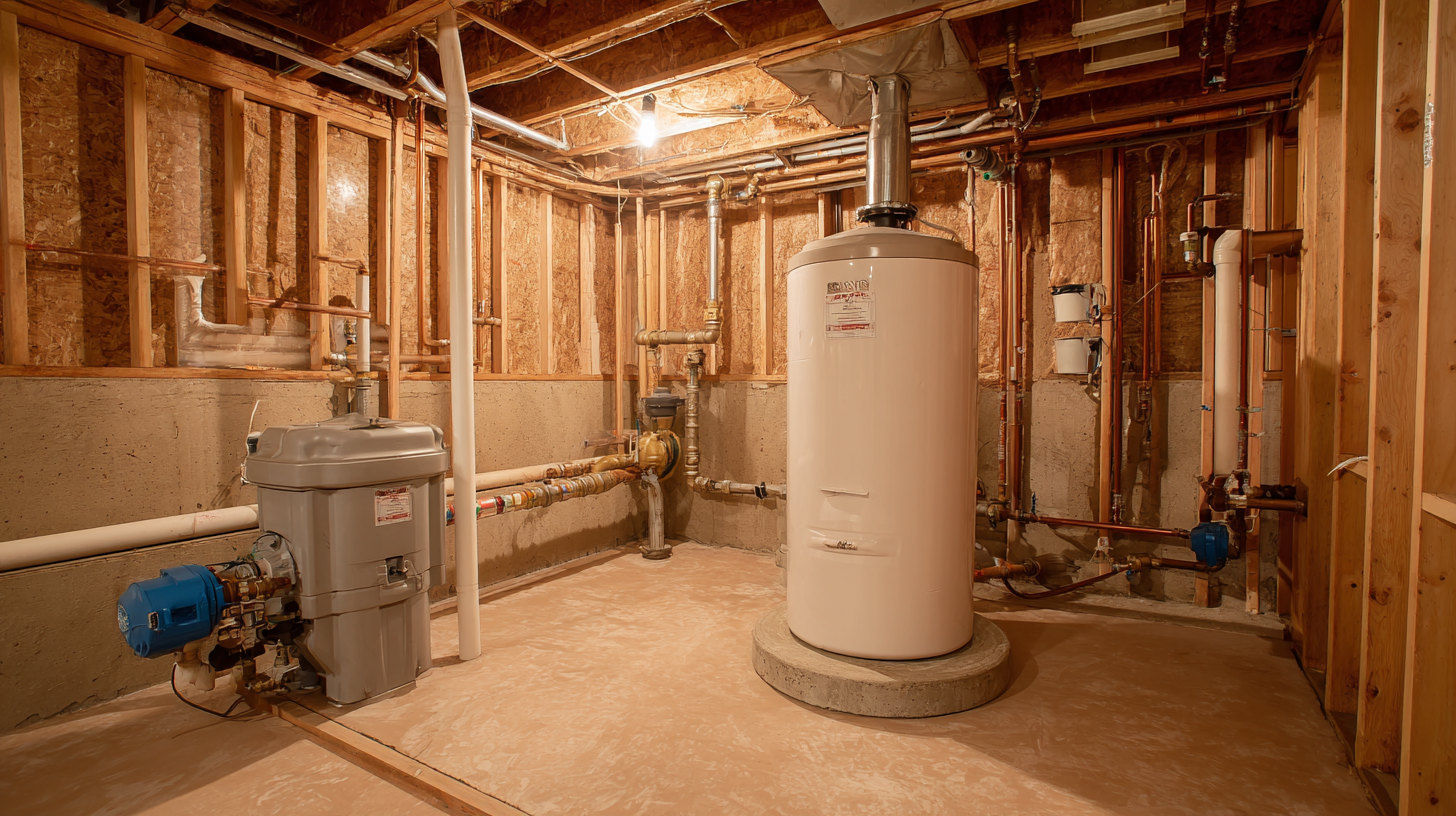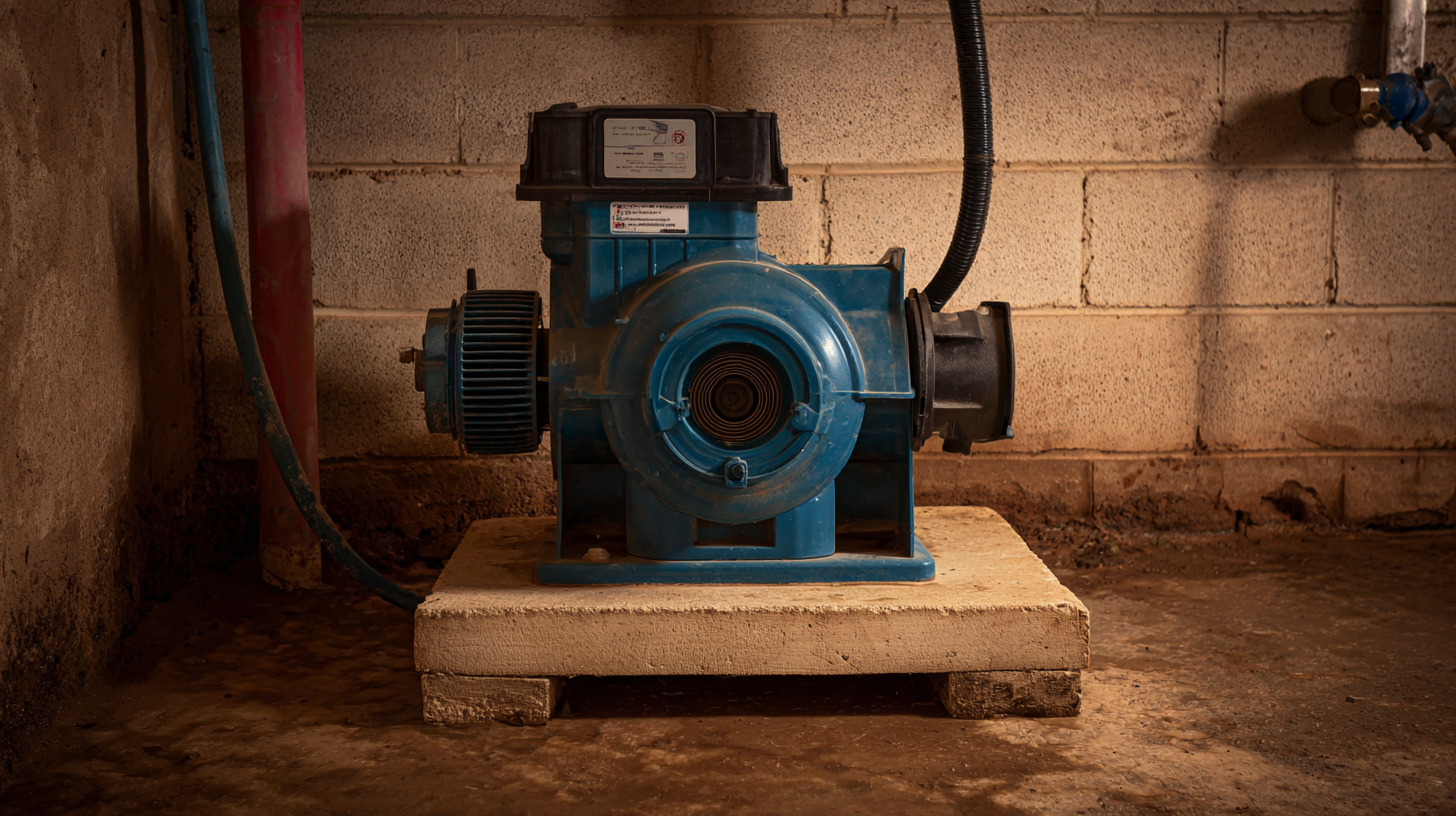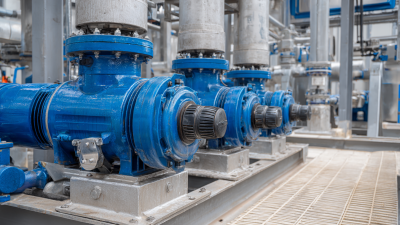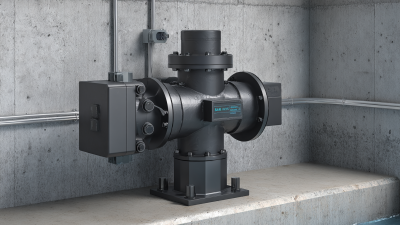
Universal Pumping | High Pressure Pumps
High Pressure Pumps for Difficult to Pump Slurry, Sludge, and Food Waste.
When faced with water damage in the home, selecting the right water removal pump becomes crucial for effective remediation. According to the National Flood Insurance Program, water damage accounts for over over 90% of all property damage claims, emphasizing the importance of prompt and efficient water removal. A high-quality water removal pump can significantly reduce the time and effort needed to clear standing water, ultimately preventing further structural damage and mold growth.

With a growing market for these pumps, projected to reach $1.2 billion by 2025, homeowners must navigate various types and features available. Understanding the specific requirements of your home and the performance metrics of different pumps will ensure that you make an informed decision, safeguarding your property against future water-related disasters.
When selecting the right water removal pump for your home, understanding your specific water removal needs is paramount. Analyzing flood risk and drainage issues can significantly influence your decision. According to the National Flood Insurance Program, around 90% of all disasters in the U.S. include flooding, making it crucial to assess your home’s vulnerability to such events. Factors such as geographical location, proximity to water bodies, and historical flooding data should be taken into consideration, as these can help gauge your flood risk and determine the best pump model to mitigate potential damage.
Moreover, homes with poor drainage systems may face additional challenges, particularly during heavy rain or storms. The Environmental Protection Agency (EPA) notes that improper drainage can lead to stagnant water, which not only necessitates effective removal solutions but also poses health risks related to mold and pest infestations. Understanding the topography of your property and existing drainage capabilities can guide homeowners in selecting a pump with the appropriate capacity and features, thus ensuring effective water removal and safeguarding your property against adverse water damage.
When it comes to selecting the right water removal pump for your home, understanding the differences between submersible and pedestal pumps is crucial. Submersible pumps, designed to operate while submerged in water, are typically more efficient for flooding scenarios where water levels are high. According to a report by the American Society of Home Inspectors, submersible pumps can remove water at a rate of up to 3,000 gallons per hour, making them ideal for significant water emergencies. These pumps also tend to be quieter and can be placed out of sight, which is advantageous for residential settings.
On the other hand, pedestal pumps are positioned above the water level and utilize a long shaft to reach down into the water. They are generally less expensive and easier to service compared to submersible counterparts. A study by the National Sanitation Foundation indicates that pedestal pumps have a longer operational lifespan due to less exposure to moisture and debris, and they typically handle smaller quantities of water more efficiently. However, they may not be suitable for deep flooding situations. Understanding these distinctions can help homeowners choose the most effective pump based on their specific needs and the unique challenges posed by their property's flood risk.
| Pump Type | Best For | Advantages | Disadvantages | Price Range |
|---|---|---|---|---|
| Submersible Pump | Flooded basements | Highly efficient, can pump large volumes, portable | Needs to be submerged, potentially more complicated repairs | $100 - $400 |
| Pedestal Pump | Dry basements | Easy to maintain, longer lifespan, not submerged | Less efficient for large volumes, can take up more space | $80 - $300 |
| Battery Backup Pump | Power outages | Provides extra safety, works during power outages | Higher upfront cost, requires regular battery maintenance | $200 - $600 |
| Sump Pump | Basements with sump pits | Effective water removal, automatic operation | May require a professional installation, can be noisy | $150 - $500 |
| External Pump | Landscaping irrigation | Versatile, can handle various applications | Less effective in high water situations, can be cumbersome | $100 - $400 |
When selecting a water removal pump for your home, understanding flow rate requirements is crucial. The flow rate, measured in gallons per minute (GPM), indicates how quickly a pump can remove water. To determine your specific needs, consider the size and type of the area that requires dewatering. For instance, basements, flooding zones, or even small garden ponds may have different requirements. A general guideline is that for typical household use, a pump with a flow rate of 10-20 GPM is usually sufficient.
To calculate the necessary flow rate, first estimate the volume of water you might need to remove. Measure the area’s dimensions to determine the total volume in gallons. Then, assess how quickly you want the area to be cleared. If rapid removal is a priority, a higher GPM pump would be more suitable. For example, if you need to remove 100 gallons of water in 10 minutes, you should aim for a pump that can handle at least 10 GPM. Understanding these dynamics will help you choose a pump that efficiently meets your needs while providing peace of mind during water emergencies.

When selecting a water removal pump for your home, evaluating the power source is crucial for reliable operation. Among the key considerations are electric and gas-powered pumps. Electric pumps often utilize portable power stations, which can be cleaner and safer compared to conventional generators. According to recent reports, the integration of renewable energy sources in powering these electric pumps has significantly reduced greenhouse gas emissions, thereby supporting eco-friendly practices for residential water management.

On the other hand, gas-powered pumps, while typically offering higher power output for challenging tasks, come with drawbacks such as emissions and fuel dependency. An analysis of the 2025 report emphasizes the UK's commitment to reducing emissions through sustainable energy practices, which aligns with the growing demand for cleaner alternatives in home utilities. For instance, solar-powered solutions are emerging as viable options, especially in rural areas, as they capitalize on renewable energy and provide a sustainable approach to water supply, making them a strong contender alongside electric options.
When selecting a water removal pump for your home, maintenance and warranty should be at the forefront of your decision-making process. A study by the American Society of Home Inspectors found that nearly 60% of homeowners experience water damage, often due to inadequate water removal systems. Thus, choosing a pump that is easy to maintain can significantly reduce long-term repair costs and prevent deterioration of your home’s structural integrity.
Many manufacturers offer warranties that can range from one year to a lifetime, depending on the pump’s features and price point. According to industry experts, a pump with a longer warranty typically indicates higher quality and better durability. In fact, pumps that come with maintenance provisions included, such as regular check-ups or part replacements, have been shown to last up to 30% longer than counterparts without such support. Therefore, assessing both the warranty and the maintenance requirements of your chosen pump can ensure you invest wisely and benefit from enhanced longevity and reliability.
This chart illustrates the importance of key factors when choosing a water removal pump, highlighting maintenance frequency and warranty duration.






Universal Pumping
625 Apache Trail
Woodstock, GA 30189
Mon - Fri | 9:00 AM - 5:00 PM
Universal Pumping is staffed with industry professionals with 20-45 years experience with high pressure pumping systems. We represent only the “elite producers” in pump manufacturing: Britain’s EMS and Germany’s EMMERICH. Our engineering and manufacturing approach is conservative, and we do not use “guess work” in the design or sales of our pumping and filtration equipment.



